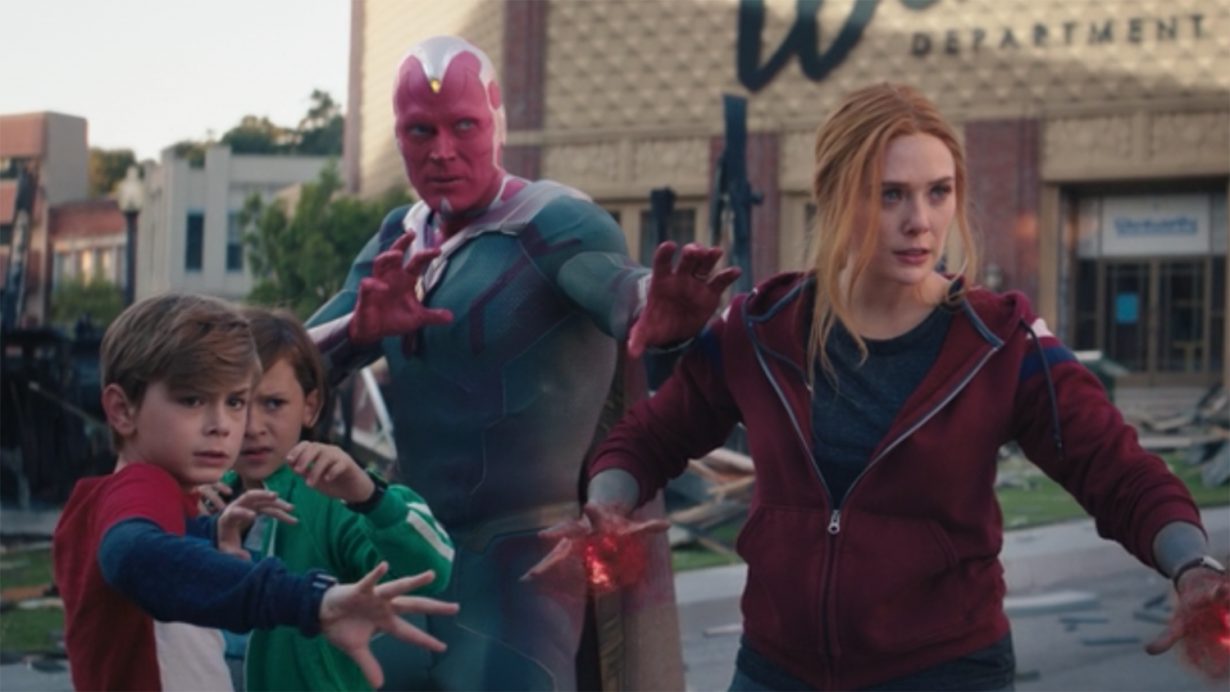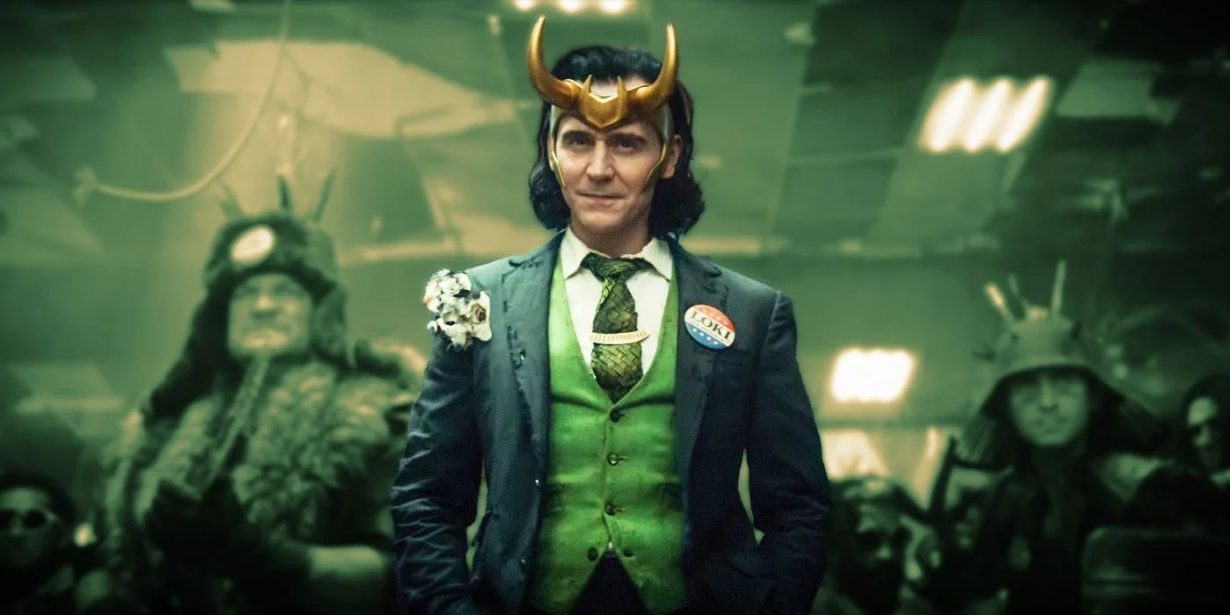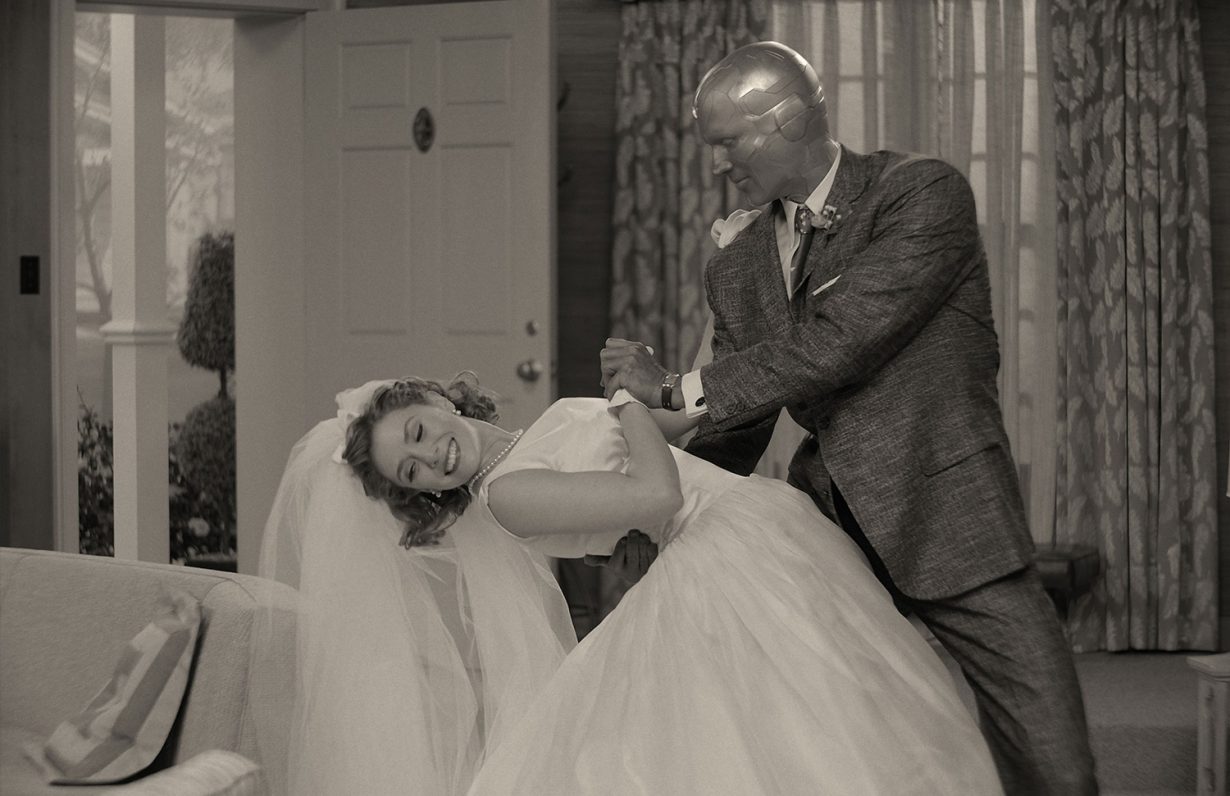Why the Marvel Cinematic Universe’s Disney+ miniseries cannot stop replaying its heroic past
Towards the end of his life, Adorno wrote of what he called ‘late style,’ the period artists enter into in the twilight of their careers in which their works – ‘devoid of sweetness, bitter and spiny’ – ‘show more traces of history than of growth.’ Works of ‘late style’ are no longer concerned with artistic unity or creative synthesis, and instead seem to revel in dissonance and disunion; the conflict between the impending death of the artist and the potential deathlessness of the work of art produces fissures and disjunctures that become, in their own way, as fascinating as those earlier moments of harmonic convergence.
Edward Said’s posthumously published essay ‘Thoughts on Late Style’ (2004) takes Adorno as its starting point to think about the crablike obstinacy of late works. ‘But what of artistic lateness not as harmony and resolution, but as intransigence, difficulty and contradiction? What if age and ill health don’t produce serenity at all? […] It is a sort of deliberately unproductive productiveness, a going against.’ For Adorno, says Said, ‘lateness has to do with surviving beyond what is acceptable and normal; he envisages nothing beyond lateness; it is impossible to transcend or surmount it; it can only be deepened.’

I’m thinking, of course, of the Marvel Cinematic Universe, which following its culminating mega-event Avengers: Endgame (2019) and the COVID-19 pandemic that has left all of its follow-up films shelved for more than a year, seems to me to have entered something like its own version of late style. If we think of the MCU as having uncannily survived itself, in Said’s sense – if we think of the film Endgame as the actual end of the Marvel franchise that was, and this year’s Disney+ miniseries WandaVision (2021) and The Falcon and the Winter Soldier (2021) as the start of something different, something smaller and more discordant – we can begin to see, I think, the traces of Adorno and Said’s late style everywhere.
Take WandaVision. The just-concluded Disney+ series sees the Marvel superhero Wanda Maximoff (Elizabeth Olsen) – having returned to life after the five-year ‘Blip’ of Avengers: Endgame to find a world full of miraculous resurrections and improbable last-minute victories but her beloved Vision (Paul Bettany) still dead – using her reality-warping powers to create a magical bubble over the small post-industrial town of Westview, New Jersey. In place of the disappointment and sadness of her present, Wanda installs instead a monument of the past, nostalgically replaying the American sitcoms that (we are now told) she voraciously consumed as a child in the post-Soviet, turn-of-the-Millennium Eastern European nation of Sokovia to achieve some glimmer of the domestic bliss she feels was promised but denied.

In working through her grief, Wanda plays an evil incarnation of Kevin Feige – the corporate mastermind behind Marvel Studios – joining Mysterio, Thanos, the Gamemaster (Thor: Ragnarok [2017]), and the Supreme Intelligence (Captain Marvel [2019]) in the role of MCU showrunner-villain. She forces the residents of Westview to dance to the tune of her pastiche sitcoms, despite their quiet pleas to be released from their torture. Early episodes in the run are almost Lynchian in their play with sitcom convention, deploying strange camera angles, menacingly long shots, odd cuts, off-kilter audio, and equally off-kilter performances to unsettle the viewer; later episodes swap in the more familiar conventions of the Marvel cinematic visual style, mostly interesting for hidden messages and small production touches that set off wild fan speculation about appearances by the X-Men, the Fantastic Four, or the Marvel Comics version of the devil, Mephisto, none of which ever pay off. Finally, at the end, Wanda has a CGI fight in the sky with someone who shoots a purple-mist version of her own red-energy-ball powers, and then flies off to work on herself for a while in a spare post-credits advertisement for her appearance in Dr. Strange 2 (2022); a version of Vision is reborn along the way, but flies off to do his own thing too.

Disney+’s next Marvel miniseries, The Falcon and the Winter Soldier (2021), which premiered on the streaming platform last week, revisits Endgame’s passing-the-torch sequence between Old Steve Rogers (Chris Evans) and Sam Wilson/Falcon (Anthony Mackie) to ask how, whether, and why the mantle of franchise anchor ‘Captain America’ should be passed on now that the man who pioneered the role is done with it. But what in the 2019 film was done in a single shot of Sam somberly holding Cap’s famous shield, asking whether it really belongs to him, must now play out over a six-hour TV show, keeping the characters warm until the next big Marvel crossover blockbuster hits cinema screens. When we’re done there, Loki (premiering on Disney+ in June 2021) will revive an alternate-reality version of the deceased Tom Hiddleston character from prior to his redemption in the films Thor: Ragnarok (2017) and Infinity War (2018) so he can be, essentially, a mischievous little scamp again; after that, the animated What If…? (coming to Disney+ in mid-2021) will replay a major event from the Marvel franchise each week with some crucial difference in premise or outcome to amuse and delight.
If the logic of the early Marvel Cinematic Universe (from 2008’s Iron Man) was additive, piling on new subfranchise after subfranchise to culminate in the unprecedentedly massive climactic battle of 2019’s Endgame, its logic since then has been multiplicative, replaying the same events from new angles, new emotional registers, and even new dimensions that cannot hope to cohere into a final cathartic unity in the same way. (The advertised location of Dr. Strange 2, after all, is ‘The Multiverse of Madness’.) If in its first stage, the Marvel film franchise was relentlessly adding to itself and its core stable of Avengers superheroes, now the cinematic universe must multiply itself, becoming different things at different times to different audiences in very different media formats; without a single focus on one plot towards which everything is relentlessly building, the franchise is instead fixated on minor variations on itself and its own affective rhythms, on interrogating, mourning, and remixing its own past.

The upcoming Marvel film Black Widow (moved this week to a 9 July release) retreats back in time to a prequel starring the dead Avenger, played by Scarlett Johansson; meanwhile Eternals (November) likewise attempts to tell the story over, this time inserting a secret history of ‘immortals’ into the backstory of the Marvel franchise we’ve been watching all this time. Even the billion-dollar Black Panther series is now overcome by this same preoccupation with death and the past after the tragic real-life death of Chadwick Boseman, a shroud of irresolvable grief that hangs over every speculative report about what to do with Black Panther 2 that dribbles out of Disney. When was the last time the Marvel Cinematic Universe produced something that wasn’t ultimately about itself, and its own inability to know what to do next? When was the last time it produced a movie or television show that wasn’t about its hero grieving the loss of someone or something they can never recover?
‘There is an insistence in late style,’ says Said, ‘not on mere ageing, but on an increasing sense of apartness and exile and anachronism.’ It may well be that the lonely and dyspeptic WandaVision, with its promisingly surreal opening and utterly boring, by-the-numbers finale, will eventually be seen to embody the late style of a franchise that is preoccupied with this sense of being simultaneously before, during, and after its own ending. Late works are about ‘lost totality,’ adds Said; consequently ‘they often give the impression of being unfinished.’ Here, too, WandaVision embodies what I am suggesting will be essential to the late style of the Marvel Cinematic Universe, its metafictional premise abandoned halfway through the run in favour of a perfunctory flashback in episode eight and an even more perfunctory magical duel in episode nine.

Even Wanda’s own level of awareness and control over her situation seems to vary from episode to episode, even from scene to scene – in much the same way that her powerset, attitude, and accent have varied in every appearance she has made in Marvel films to date. Villains emerge in the second half of the story, as the critic Abigail Nussbaum has so convincingly argued, not because they have organically been set up but because something has to enter this situation so that it isn’t Wanda’s fault. Why the villains are punished, but Wanda is forgiven, goes nearly entirely unexamined; instead, Wanda simply calls a wrap on WandaVision, shuts down production, and leaves town, having neither redeemed herself nor moved on from her pain, nor even really learned anything useful about magic from wacky antagonist Agatha Harkness (Kathryn Hahn).
The pointed lack of resolution – of any point to all this – will, I want to suggest, be characteristic of the Marvel Cinematic Universe’s upcoming superheroic tour of Adorno and Said’s late style, the franchise delighting in its new sourness as it lives on in this odd zombie space between the pinnacle of global culture and the long slide into decline, irrelevance, and inevitable reboot. ‘Lateness,’ says Said, ‘is being at the end, fully conscious, full of memory, and also very (even preternaturally) aware of the present.’ As the MCU enters its late style, its hyper-self-awareness and self-referential preoccupation with a heroic past it cannot stop grieving replaces the explosive growth and grand designs of its early period. The artist in late style, after all, ‘does not bring about their harmonious synthesis’; instead, as Adorno reminds us, ‘as the power of its dissociation, he tears them apart in time, in order, perhaps, to preserve them for the eternal. In the history of art late works are the catastrophes.’
